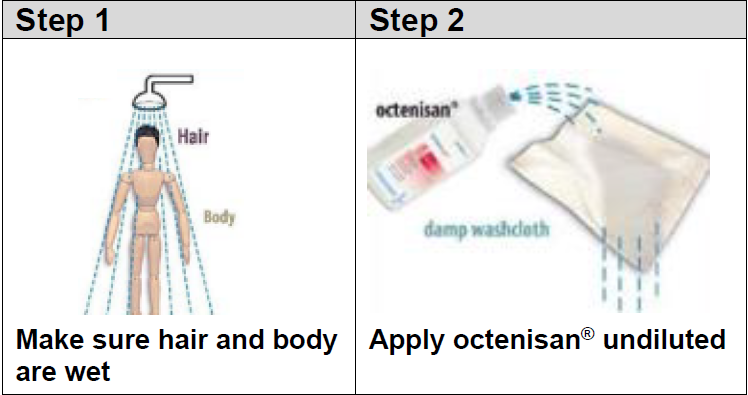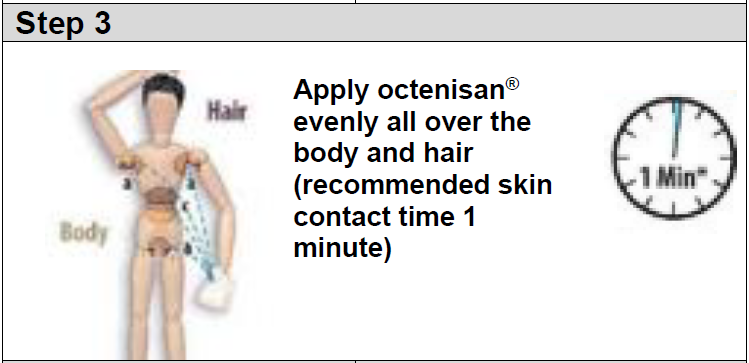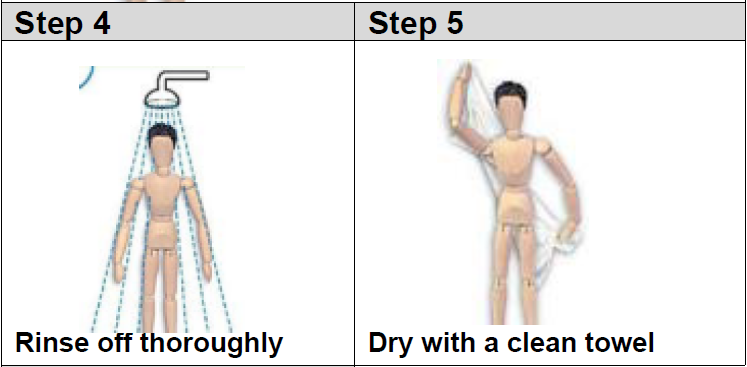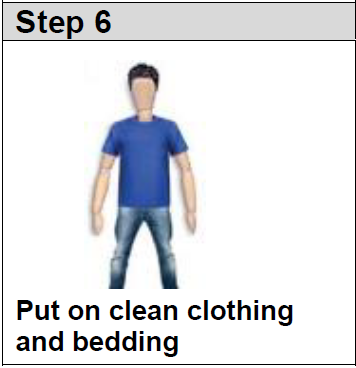MRSA treatment for orthopaedic joint replacement and spinal surgery
This page gives you information about MRSA (Meticillin-resistant Staphylococcus aureus) and its treatment.
On this page
-
What is MRSA?
-
How did you find out I was MRSA positive?
-
How do you treat MRSA?
-
Will I always be MRSA positive?
-
Will hospital staff treat me differently from other patients?
-
Is it safe for me to have visitors?
-
How do I wash my clothes?
-
What if I still have questions after reading this page?
-
How to apply the treatment
-
Bactroban® (Mupirocin 2%) nasal treatment
-
Contact information
What is MRSA?
MRSA is a bacteria which can be found on the human body or in the environment. It is a member of the Staphylococcus aureus family of bacteria.
Staphylococcus aureus is a common type of bacterium which lives on the skin and nose of about one third of the population, without causing any problems. This is called ‘colonisation’.
People who are colonised are often not ill and most will not know that they carry these bacteria.
The bacteria usually live in the moist areas of the body, such as armpits, groin or nose, although it can be found on other parts of the body such as your hands.
Like any germ, it can cause an infection in certain skin problems such as pimples or boils. These germs can cause more serious infections if they get into areas where they would not normally be found. When Staphylococcus aureus causes infections, it is usually treated with antibiotics such as flucloxacillin.
Sometimes, Staphylococcus aureus can be resistant to a range of antibiotics which includes a type of penicillin called meticillin, hence the name Meticillin-resistant Staphylococcus aureus (MRSA).
How did you find out I was MRSA positive?
You may remember nursing staff taking a series of swabs from the areas listed below. Bacteria grown from the swabs in 1 or more of these areas were found to be MRSA.
- Your nose
- The area around your groin
- Your sputum (but only if you had a cough at the time)
- Your wounds (including if you have had a needle into a vein) and other sore/open skin areas such as eczema, or leg ulcers
- You may have been asked to give a urine sample if you have a catheter in place, or you are female and sometimes self-catheterise yourself.
How do you treat MRSA?
Before your surgery it is advised to reduce the amount of germs on your skin. Therefore, you will be treated with a combination of prescribed body wash and nasal ointment for 5 days (suppression therapy). Once you have completed the 5 day treatment you will be rescreened (tested) after 2 days then after a further 5 days and then again after a further 5 days. This is to make sure that the MRSA is no longer present.
These 3 tests (rescreens) need to be negative before the surgery can take place. If the results after the treatment are positive a further course of treatment may be prescribed, and repeat screening will take place.
Before your admission to hospital, we would like you to complete a further 5 day course of the suppression therapy with the 5th day of treatment being the day of surgery. This treatment can be completed at home. You will also be advised to change your clothes every day for the 5 days while using the treatment. Daily changing of bed linen and towels is also recommended.
Will I always be MRSA positive?
Not necessarily. Some patients do remove the germs from the skin, while others do not get rid of them all. It is not known why this happens, but success often depends on how well you follow the advice on this page on how to apply the body wash and use the nasal ointment.
Will hospital staff treat me differently from other patients?
Yes, they most likely will. Nursing staff will follow advice given by the Infection Prevention and Control Team and may place you in a side room if one is available. This is to make sure that the germs are not transmitted from one person to another.
Is it safe for me to have visitors?
Yes, but we expect your visitors to either use the alcohol gel or wash their hands with soap and water when entering and leaving the ward. Both methods are a reliable way to clean your hands.
We also expect your visitors to follow advice from the hospital, which includes:
- not sitting on patients’ beds
- not visiting if they are unwell
How do I wash my clothes?
All items can be washed as normal but it is best to wash them separately from other items.
What if I still have questions after reading this page?
Please feel free to ask a member of staff for further information. If necessary, they can contact a member of the Infection Prevention and Control Team who will be happy to answer any queries you may have.
How to apply the treatment
- Use for 5 days up to and including the day of your surgery for having a wash, bath or shower.
- Use the supplied antimicrobial body wash before your surgery and while you are in hospital instead of soap/other skin washes.
- Use the wash as a shampoo twice in the 5 days before you come in for surgery, for example on day 2 and day 4.
Step 1
Make sure hair and body are wet
Step 2
Apply octenisan® undiluted
Step 3
Apply octenisan® evenly all over the body and hair (recommended skin contact time 1 minute)
Step 4
Rinse off thoroughly
Step 5
Dry with a clean towel Step 6
Step 6
Put on clean clothing and bedding
Bactroban® (Mupirocin 2%) nasal treatment
- Use 3 times each day for 5 days. Put a small amount of the ointment, about the size of a match head, on a cotton bud or on a gloved finger and apply to the inside of each nostril (apply to the front part of the nostril).
- Close the nostrils by pressing the sides of your nose together. This will spread the ointment through the nostrils.



